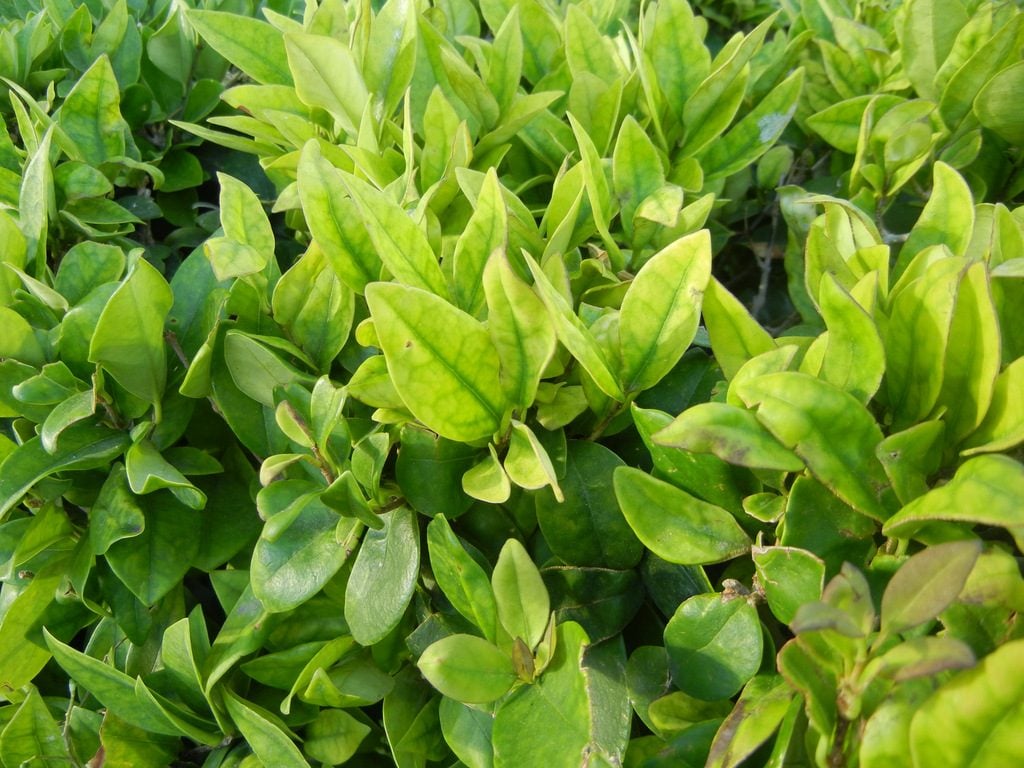If Your Plant Has Yellow Leaves With Green Veins, This Is What It Means
Updated: Sep. 18, 2023
Does your plant have new yellow leaves with green veins? Learn how to test your soil, treat iron deficiency and keep your plants healthy.
If your plant has new yellow leaves with green veins—don’t worry! You can help solve the problem by following these tips.
What Are Your Plant Leaves Trying to Tell You?
Have you noticed some of your plant leaves turning yellow with green veins? Yellow leaves are usually a sign of either a lack of nitrogen or iron. So, how can you which one your plant is deficient in? Well, it is really quite easy. Nitrogen deficiency causes older leaves to yellow and newer leaves to stay green. However, when it comes to iron deficiency it is the opposite—younger leaves turn yellow first.

The other characteristic of iron deficient plants is that although the younger leaves turn yellow, their veins remain green. Iron is needed for plants to function. Without it, they will not grow.
What is interesting about iron is that there is usually plenty of it in the soil. But, certain factors can affect it being available for plants to absorb. If your soil is wet, has a high pH (alkaline soil), and/or clay soils are all factors that can lead to iron from becoming unavailable for plants.
Why does my plant have brown tips on the leaves?
How to Treat Yellow Leaves with Green Veins
- A fast-acting solution is to apply an iron chelate fertilizer to your plant. For the best results, use an iron chelate product that can be sprayed on the foliage. You can also apply iron chelate to the soil around your plants. Iron chelate can be reapplied as needed. *As with all fertilizers, follow instructions on the package carefully. You don’t want to apply too much iron. (Iron chelate can stain concrete, so be careful when using).
- If you have clay soil, or your soil is compacted or overly wet then working a mixture of compost and peat moss into the soil around your plants will help to provide a long term solution to iron deficiency. Adding organic matter will help to improve the texture of your soil, helping it to drain better. Compost and peat moss will also help to lower the pH of your soil, which will help the iron in your soil to become available to your plants.
- Have your soil tested to determine the the pH of your soil. You can purchase a home soil testing kit at your local garden center—it’s easy to do. If your soil pH is over 7.0, that means that it’s alkaline and taking steps to acidify your soil should be taken to help your iron deficient plants.
- Adding ammonium sulfate or elemental sulfur will also help to acidify your soil (lower the pH), but the effect won’t last forever. These will have to be reapplied periodically.
- Iron deficiency is best treated by preventing it from occurring in the first place. If your soil pH is over 7.0, clay-like or often wet, then incorporate compost and peat moss before planting.
Next, learn how to prevent brown spots on plant leaves.